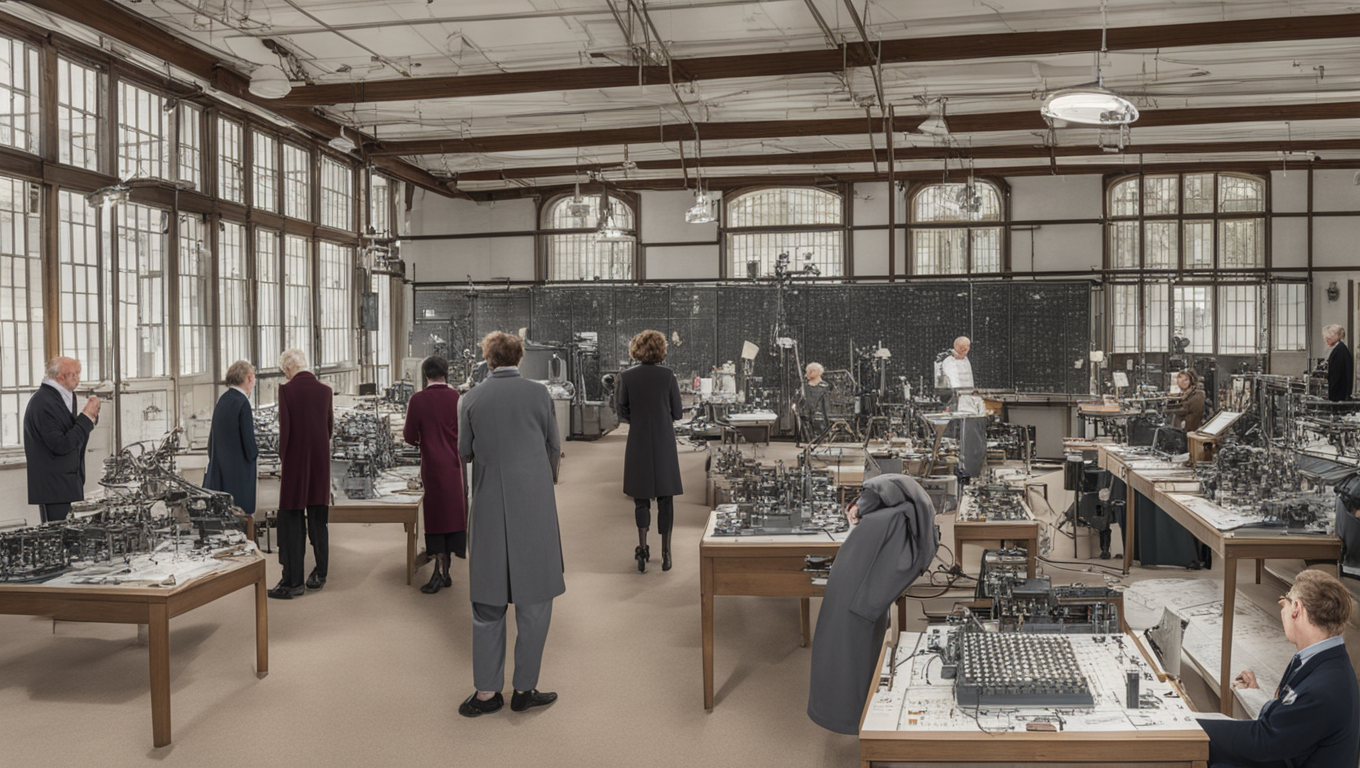The United Kingdom is currently hosting the AI Safety Summit, an event that brings together politicians, computer scientists, and tech executives. Interestingly, this summit is taking place at Bletchley Park, a location with a rich history in codebreaking and the birth of computing. During World War II, Bletchley Park served as the operational hub for a group of mathematicians, cryptographers, and crossword puzzlers who were engaged in a secret war against Nazi Germany. Their mission was to crack the supposedly unbreakable codes created by Adolf Hitler.
Bletchley Park’s most notable achievement was the successful cracking of Germany’s Enigma encryption machine. The Enigma produced a constantly changing cipher that was considered impervious to decryption. However, mathematician Alan Turing, building on the work done by Polish codebreakers, developed the “Turing bombe,” which can be considered an early version of modern computers. With the deciphered Enigma messages, the Allies gained critical information about Germany’s U-boat fleets, which aided in the North African desert campaign and the invasion of France. Some historians even propose that cracking the code may have shortened the war by up to two years.
Although Bletchley Park is often associated with Alan Turing and other eccentric scientists, the reality is that almost 10,000 people worked there during the war, with three-quarters of them being women. The site consisted of the mansion, brick and concrete blocks, and smaller wooden huts, all filled with workers tirelessly deciphering codes around the clock. It functioned like a factory, operating 24 hours a day, seven days a week.
After the war, the codebreakers returned to civilian life and were bound to secrecy regarding their wartime work. It was not until the 1970s that the significance of Bletchley Park became widely known in Britain. The site was transformed into a museum in 1994, preserving its 1940s appearance, complete with typewriters, rotary phones, and other artifacts from the era.
Alan Turing, one of the key figures associated with Bletchley Park, continued his work in computing after the war. He developed the famous “Turing test,” which measures when artificial intelligence becomes indistinguishable from human intelligence. Turing faced personal struggles in his life and was unjustly punished for being gay. However, he has since been recognized as a national hero, with statues, plaques, and even the prestigious $1 million Turing Prize named in his honor.
Hosting the AI Safety Summit at Bletchley Park is a fitting choice for the UK government, as it showcases the historical significance of the location in the development of computing and cryptography. It serves as a reminder of the innovation and perseverance exhibited by the codebreakers during World War II. By gathering experts in artificial intelligence, the summit aims to address the importance of safety and ethics as AI continues to advance.
As the AI Safety Summit unfolds at Bletchley Park, the event not only offers a unique setting for discussions but also serves as a testament to the pivotal role that codebreaking and computing played in shaping history. The legacy of Bletchley Park undoubtedly lives on, inspiring future generations to push the boundaries of technology and ensure that AI is developed responsibly and ethically.





Use the share button below if you liked it.